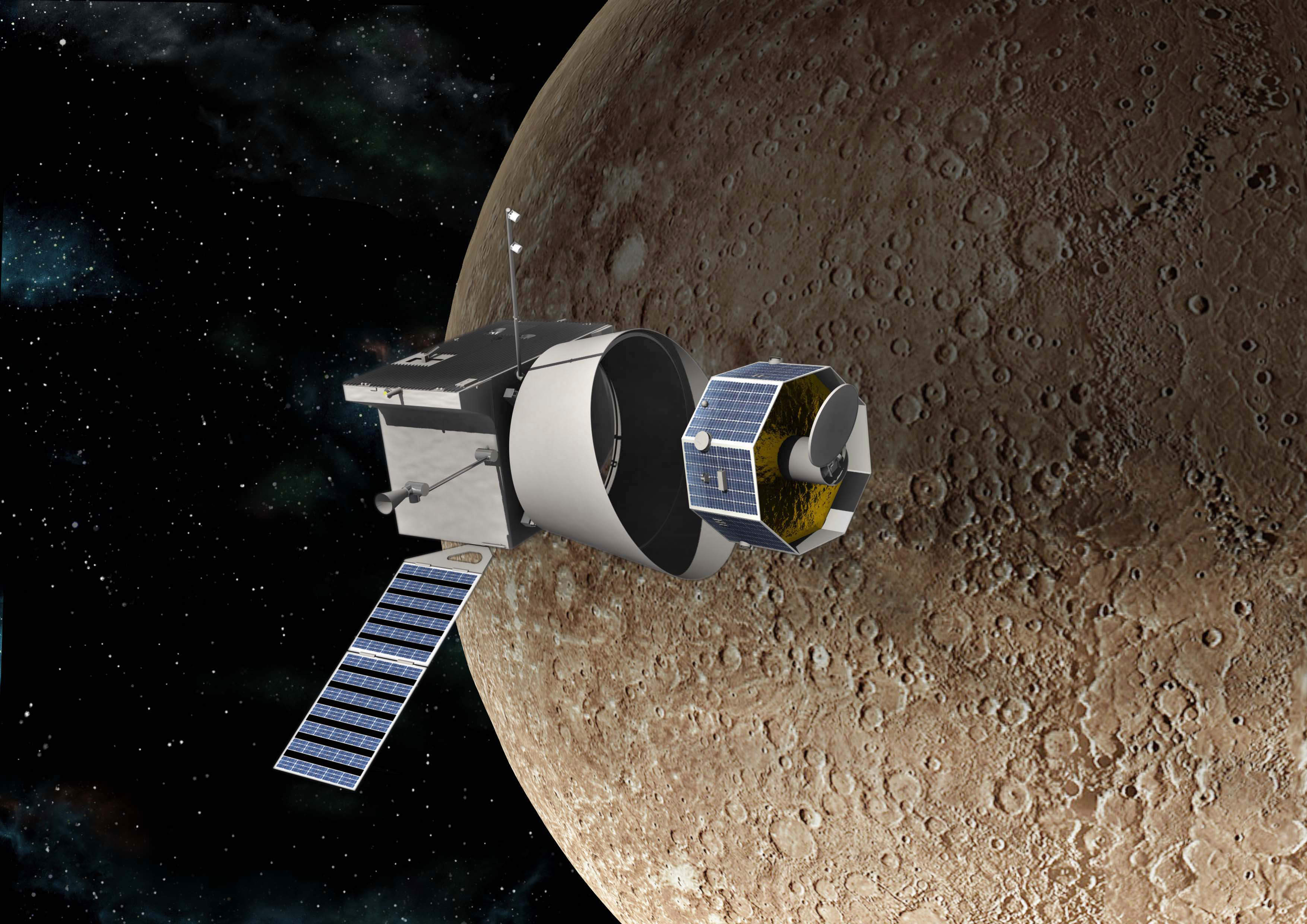Caption: BepiColombo’s components separating at Mercury. Image Credit: Astrium
BepiColombo, due to launch in 2015, will be only the third spacecraft to visit Mercury and the first to be sent by the European Space Agency (ESA) and the Japan Aerospace Exploration Agency (JAXA). Currently undergoing tests at ESA’s European Space Research and Technology Centre (ESTEC) in the Netherlands. Here are the details and objectives of this joint mission to our innermost planet which hopes to give us the best understanding of Mercury to date
As the innermost of the terrestrial planets Mercury has an important role in showing us how planets form, yet it is the least explored planet in the inner Solar System. NASA sent Mariner 10 in 1974–5 and MESSENGER flew passed the planet 3 times in 2008 and 2009, before going into orbit around it last year. Being in close proximity, the Sun’s enormous gravity makes placing a spacecraft into a stable orbit, a challenge.
Professor Giuseppe (Bepi) Colombo (1920–1984) was the Italian mathematician and scientist who developed the gravity-assist maneuver and helped NASA to devise the trajectory of Mariner 10. The spacecraft that bears his name comprises three components: the Mercury Transfer Module (MTM) and the two probes: Mercury Planetary Orbiter (MPO) and the Mercury Magnetospheric Orbiter (MMO) It will take 6 years to make the journey from Earth to Mercury using solar-electric propulsion and gravity assists from the Earth and Venus, before eventual gravity capture at Mercury.
The transfer module will then separate and the orbiters will use rocket engines and a technique called ‘weak stability boundary capture’ to enter polar orbits around Mercury. MPO will enter a 2.3 hour period polar orbit and MMO a 9.3 hour period polar orbit. MPO is a 357 kg spacecraft in the shape of a flat prism will carry an imaging system consisting of a wide-angle and narrow angle camera, an infrared spectrometer, an ultraviolet spectrometer, gamma, X-ray, and neutron spectrometers, a laser altimeter, an ion and neutral spectrometer, a near-Earth object telescope and detection system, and radio science experiments. During the 1 year nominal mission it will map the entire surface in different wavelengths, and hopes to find water ice in polar craters permanently in shadow from the Sun’s rays.MMO is a flat cylinder with a mass of about 250 kg and will carry fluxgate magnetometers, charged particle detectors, a wave receiver, a positive ion emitter, and an imaging system.
The main mission objectives are: to investigate the origin and evolution of a planet close to the parent star; study Mercury’s form, interior structure, geology, composition and craters; examine the composition and dynamics of Mercury’s vestigial atmosphere (exosphere); probe the structure and dynamics of Mercury’s magnetized envelope (magnetosphere); determine the origin of Mercury’s magnetic field; investigate the composition and origin of polar deposits and perform a test of Einstein’s theory of general relativity.
In 1845, Urbain-Jean-Joseph Le Verrier, noticed that at perihelion Mercury was moving around the Sun faster than predicted by Newton’s theory of gravity. It was not understood until 1915 when Albert Einstein overhauled the theory of gravity. BepiColombo will measure Mercury’s motion more accurately than ever before and so provide one of the most rigorous tests ever of Einstein’s theory.
Find out more about the mission at ESA


Wow. This is a good story. The current orbital US Messenger mission combined with this new one will certainly open up our knowledge of the innermost planet of Mercury. Good to see the missions are complementary in obtaining data and not duplicating it. Go ESA!
So when are we going to land? Let’s have a Mercury rover!
What I thought too. A lander, or even a rover would be really nice.
But then again I think Solar System objects like Titan or Europa are more interesting targets for the next lander missions. A Mars sample return mission would be cool.
So many things to explore!
One day, we will have put some form of a lander on every major Solar System object, possibly with the exception of the Sun. One can dream…
I agree those spheres would make amazing targets. Enceladus would also be nice rover mission.